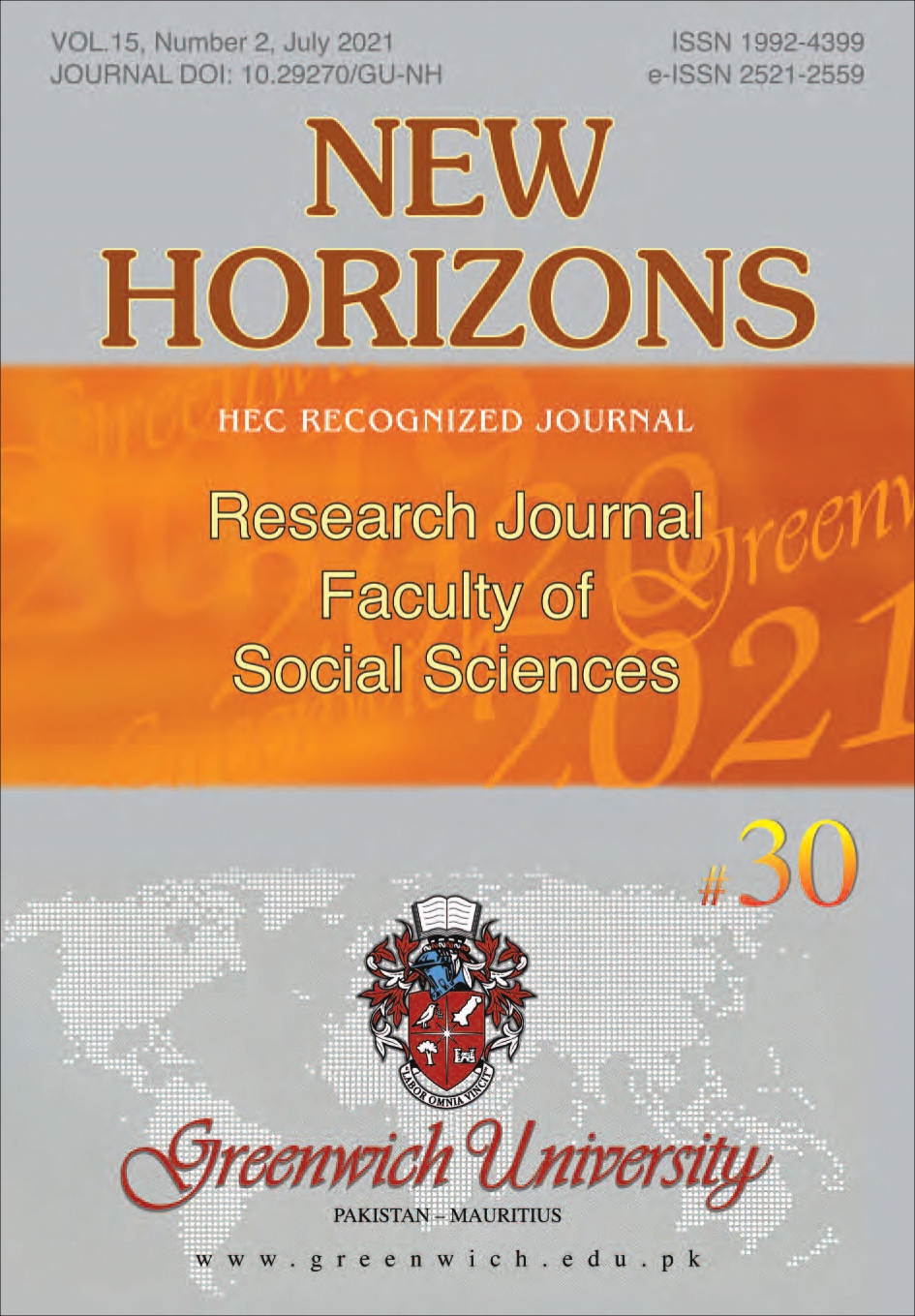COMMUNICATION – A TOOL FOR DEVELOPMENT: A CASE STUDY OF OUT OF SCHOOL CHILDREN OF REHMAN COLONY KARACHI-SINDH
Abstract
Education is necessary for development because it increases economic growth and prosperity of a country and its people. In this era of communication and technology, the school going age children of our country are still out of schools and our government has failed in even providing primary education to them. The condition of children who belong to the lower class of society and those living in marginalized segments of our society is worst of all. The present study attempts to highlight the role of interpersonal communication in altering the attitude and behaviour of the marginalized segment of people living in our society and to promote social development with the help of development support communication. This study utilizes phenomenological research methodology to get an in-depth understanding of the situation and to solve the research questions of the study. The relationship between interpersonal communication and development support communication is examined in this study. In its support a case study of Rehman Colony is taken as an example where primary education to non-school going children was promoted with the help of development support communication using interpersonal communication. The study reveals that in the absence of traditional media, interpersonal communication is the best possible solution, which is effective, cheap and non-dependent of any technology. The research suggests that at community level people can work mutually for the betterment of society and with a little mutual effort socio-economic conditions of marginalized people living in our society can be improved and social discrimination can be terminated.
References
Abida et al. (2015). Communication and technology: A tool for better living. Journal of Mass Communication, 13, 188.
Chang, R. & Soomro, M. (2009). The press and development issues in Pakistan. New Horizons, 3(2), 41–42.
Creswell, J.W. (2013). Qualitative Inquiry & Research Design: Choosing Among the Five Approaches. (pp. 77-83). Thousand Oaks, CA: SAGE Publications Inc.
Daramola, I. (2012). Introduction to Mass Communication. Lagos: Rothan Press Limited.
Dominick, R. (2010). The Dynamics of Mass Communication: Media in the Digital Age. (8th Edition pp. 9-15). New York: The McGraw-Hill Companies, Inc.
Hall, A. & Midgley, J. (2004). Social policy for development. (p.153) London: SAGE.
Khan, A. J. (2015). Development Communication. Royal Book Company.
Maxwell, J.A. (2013). Qualitative Research Design: An Interactive Approach. (pp. 135-136). Thousand Oaks, CA: SAGE Publications Inc.
Melkote, S. & Steeves, H. (2001). Communication for Development in the Third World: Theory and Practice for Empowerment. SAGE Publications India Private Limited.
Narula, U. (1999). Development Communication Theory and Practice. (pp.41-42). New Delhi: Har-Anand Publications Private Limited.
National Research Council. (2015). Transforming the workforce for children birth through age 8: A unifying foundation. National Academies Press.
Pakistan Education Statistics 2015-16. (2017). http://Library.Aepam.Edu. Pk/. http://library.aepam.edu.pk/Books/Pakistan%20Education%20 Statistics%202015-16.pdf
Servaes, J. & Malikhao, P. (2005). Participatory Communication: The New Paradigm? In Hemer, O., Tufte, T., & Eriksen, T. H. (Eds). Media and global change: rethinking communication for development. (pp.91-104). Göteborg: Nordicom.
The Constitution of Pakistan. (2010). http://www.pakistani.org/pakistan/ constitution/ Outcomes on Education. (2000). United Nations. https://www.un.org/en/ development/devagenda/education.shtml
40 per cent of children in Sindh out of school, admits CM. (2019). The News International. https://thenews.com.pk/print/547598-40-per-cent-of-children-in-sindh-out-of-school-admits-cm


